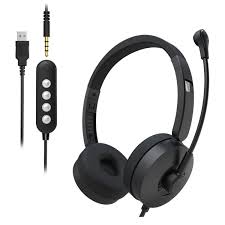
Ergonomic Excellence: Comfort and Convenience in Landline Headsets
Landline headset have been subject to considerable transformations over time, adjusting to technological improvements and shifting end user tastes. Here’s a peek at the development of landline headset:
1. Analogue Time:
Early landline headsets have been primarily analogue, showcasing fundamental patterns with wired connections to landline telephones.
These headsets provided minimal usefulness and quite often lacked characteristics for example sound cancellation and adaptable headbands.
Despite their efficiency, analog landline headsets transformed conversation by offering palms-cost-free convenience.
2. Changeover to Computerized:
Using the coming of computerized technological innovation, landline headsets progressed to offer increased mp3 high quality and innovative functions.
Electronic digital headsets released noises-canceling mics, letting end users to experience clearer chats even just in loud situations.
Increased comfort was a concentrate, with manufacturers planning ergonomic headsets with adaptable features for personalized fit.
3. Wi-fi Revolution:
The development of wifi modern technology transformed the landline headset sector, offering customers remarkable flexibility.
Bluetooth and DECT (Electronic digital Increased Cord less Telecommunications) systems empowered wifi connectivity between headsets and basic stations.
Wireless headsets wiped out the restrictions of cords, letting consumers to maneuver freely throughout telephone calls, enhancing productivity and comfort.
4. Incorporation with Smart Gadgets:
As smartphones and also other intelligent units become popular, landline headsets adjusted to provide effortless integration.
A lot of contemporary headsets function Wireless bluetooth connections, enabling consumers to switch between landline phone calls and portable telephone calls very easily.
Some headsets provide incorporation with voice assistants, permitting hands and wrists-free of charge manage and enhancing consumer expertise.
5. Future Developments:
The future of landline headsets may very well be shaped by improvements in man-made intelligence and connections.
AI-powered features such as actual-time language language translation and tone of voice recognition may become common in the future headsets, enhancing conversation capabilities.
Integration with internet truth (VR) and augmented fact (AR) technology could more enhance the usefulness and flexibility of landline headsets.
To conclude, the development of landline headsets from analog to digital, and today wireless network, demonstrates the continuous development in interaction technology. With every advancement, landline headsets have become more ergonomic, attribute-abundant, and seamlessly built-in along with other units, supplying consumers remarkable efficiency and performance.